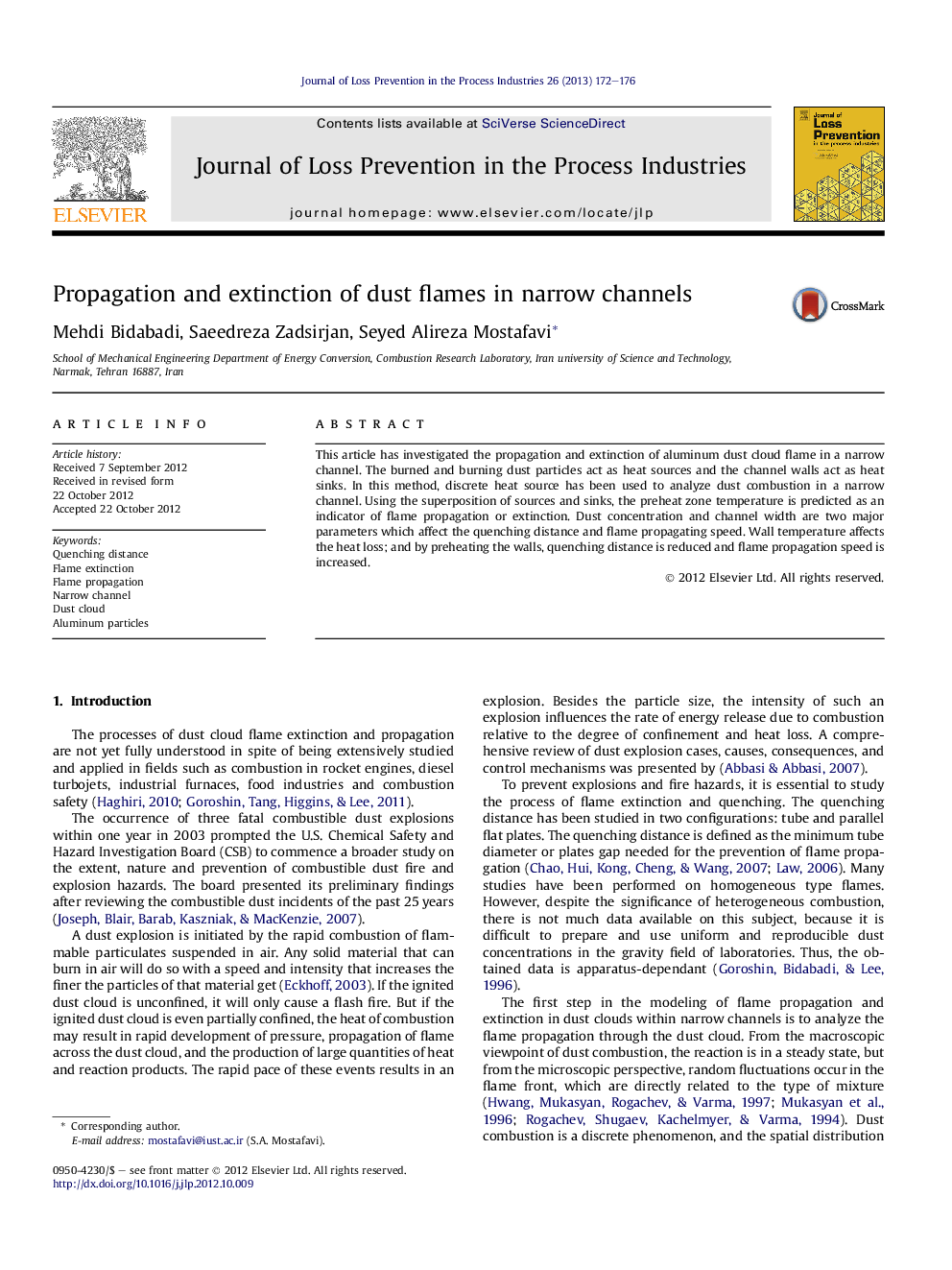| Article ID | Journal | Published Year | Pages | File Type |
|---|---|---|---|---|
| 586961 | Journal of Loss Prevention in the Process Industries | 2013 | 5 Pages |
This article has investigated the propagation and extinction of aluminum dust cloud flame in a narrow channel. The burned and burning dust particles act as heat sources and the channel walls act as heat sinks. In this method, discrete heat source has been used to analyze dust combustion in a narrow channel. Using the superposition of sources and sinks, the preheat zone temperature is predicted as an indicator of flame propagation or extinction. Dust concentration and channel width are two major parameters which affect the quenching distance and flame propagating speed. Wall temperature affects the heat loss; and by preheating the walls, quenching distance is reduced and flame propagation speed is increased.
► Dust cloud flame propagation and extinction has been modeled using the discrete heat source and sink approach. ► Dust concentration, channel width and wall temperature are the parameters with more influence on quenching distance. ► By increasing the particle diameter, the quenching distance increases. ► A wider channel provides a higher flame propagation speed because of less heat loss. ► A preheated channel causes a smaller quenching distance and a higher flame propagation speed.
